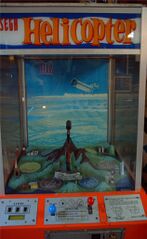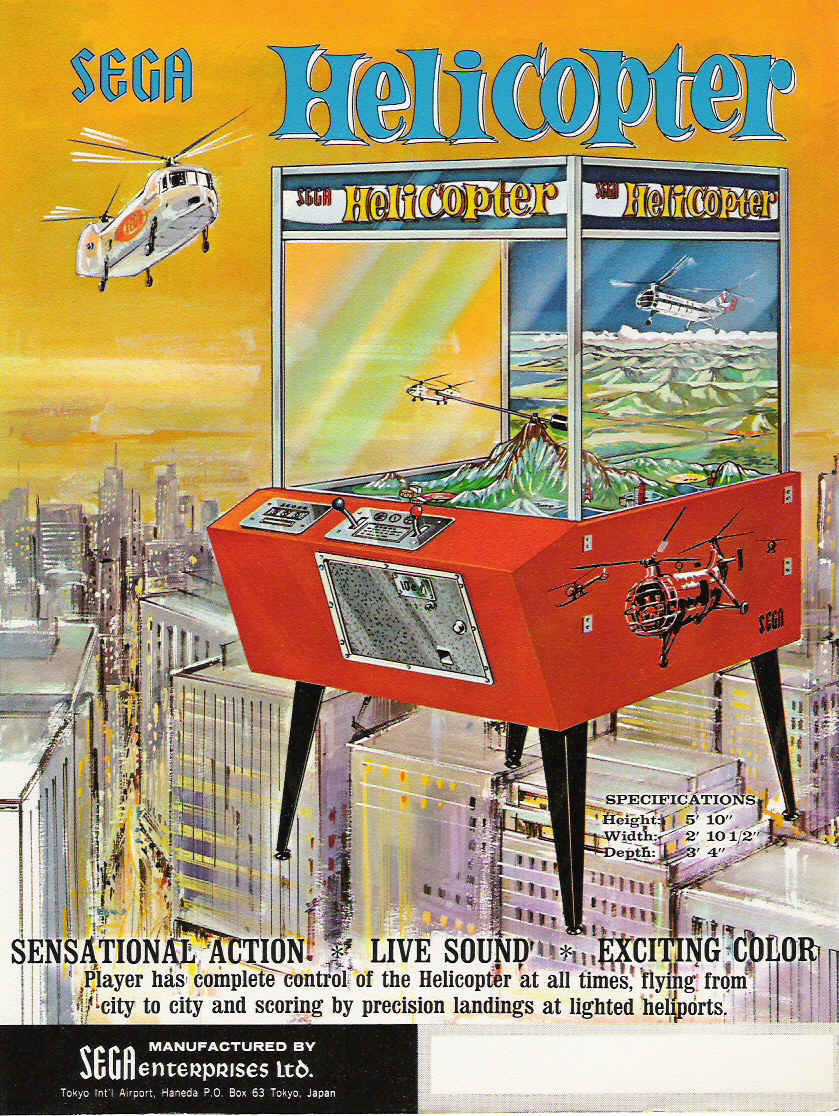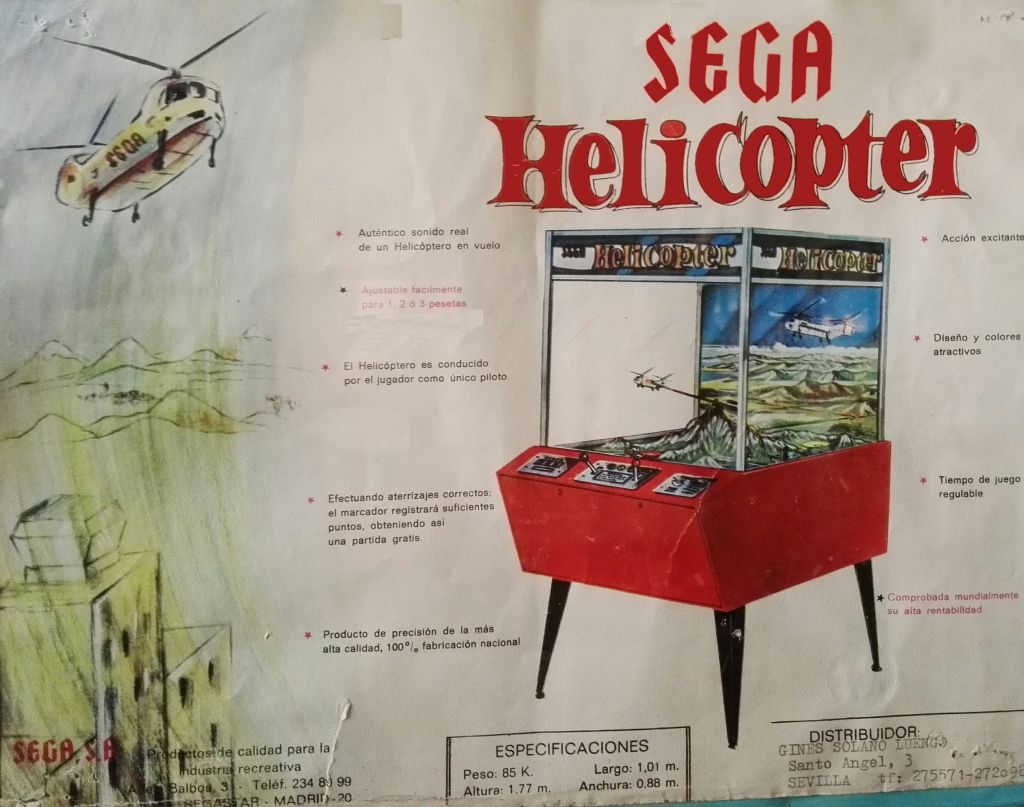Difference between revisions of "Helicopter"
From Sega Retro
m |
|||
| Line 12: | Line 12: | ||
}} | }} | ||
}} | }} | ||
| − | {{sub-stub}}'''''{{PAGENAME}}''''' (ヘリコプター) is a July 1968 10-cent electro-mechanical arcade game. It is a | + | {{sub-stub}}'''''{{PAGENAME}}''''' (ヘリコプター) is a July 1968 10-cent electro-mechanical arcade game. It is a helicopter simulation. Two similar games were [[Midway]]'s ''Whirly Bird'' (1969) and Amusement Engineering's ''Helicopter Trainer'' (1968), with Sega's ''Helicopter'' thought to predate them both. |
==Gameplay== | ==Gameplay== | ||
Revision as of 22:59, 6 May 2021

| |||||||||||||||||
| Helicopter | |||||||||||||||||
|---|---|---|---|---|---|---|---|---|---|---|---|---|---|---|---|---|---|
| System(s): Electro-mechanical arcade | |||||||||||||||||
| Publisher: Sega | |||||||||||||||||
| Developer: Sega | |||||||||||||||||
| Number of players: 1 | |||||||||||||||||
|
This teeny-tiny article needs some work. You can help us by expanding it.
Helicopter (ヘリコプター) is a July 1968 10-cent electro-mechanical arcade game. It is a helicopter simulation. Two similar games were Midway's Whirly Bird (1969) and Amusement Engineering's Helicopter Trainer (1968), with Sega's Helicopter thought to predate them both.
Contents
Gameplay
Players fly a helicopter around circle. The helicopter is attached to a rod that pivots on top of a center pylon and a counter weight helps lift the helicopter. Player controls the helicopter's pitch and speed. The object of the game is to fly the helicopter so it touch one of seven stationary pins (located around the edges of the helicopter's circle of rotation) with the helicopter's two pring "whiskers". The stationary pin to touch is identified by a light. After touching one stationary pin, another stationary pin is lit. When the correct pin is hit, points are scored. There is a set amount of time per game. The more targets hit, the higher the score.
Sega's Helicopter uses an 8-track tape for background sound for the helicopter engine and rotor sound effects. The speed of the tape player changes to roughly correspond to the throttle setting of the model helicopter, so the sound gets faster as the helicopter goes faster.
Specifications
Dimensions[2]






